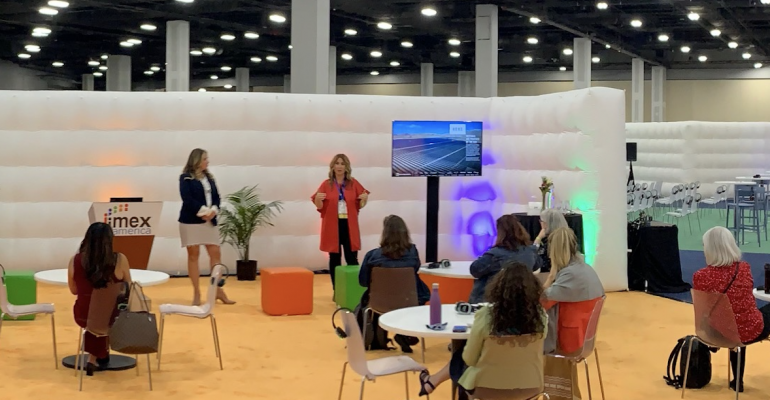Despite the Omicron variant of Covid dominating the headlines at the moment, many planners and suppliers are working together to coordinate and execute in-person events in 2022. But the way that contracts for those events are negotiated and worded cannot be the same as they were prior to the pandemic, said several prominent suppliers during the recent IMEX America show held in Las Vegas.
While co-hosting a breakout session on the topic, Stephane Glanzer, CMP, chief sales officer and senior vice president for MGM Resorts International, said that “planners have new objectives related to the quality of the experience. The financials have changed—budgets are going towards more health and safety items and technology elements, and that often comes from food and beverage and decor. As a result, planners should let us know where they need help to compensate for those shifts, and suppliers must be transparent with planners in return.”
For instance, the new meeting environment might require more total space to allow for social distancing—but then a host property would need assurances from the planner that the attendance numbers will be met. “Hotels cannot take the lion’s share of risk anymore,” said Glanzer. “How are you both sharing the burden of risk in the contract? Don’t hold 100 percent of your space if you don’t have a firm handle on what your attendance will be. Provide the property with updates at agreed-upon checkpoints so that, if you’re not where you thought you would be, some of that space can be released.”
In a similar vein, Mike Massari, chief sales officer for Caesars Entertainment, told MeetingsNet in a conversation on the show floor that “any property that wants to hold groups to the letter of contracts they signed 18 months ago is not a property planners will want to work with anymore. On the other hand, any group that is looking for a 30 percent attrition rate in a contract is not one that properties will want to work with.”
One solution he recommends: Discussions between a planner and supplier at 120 days out and 90 days out regarding estimated room pick-up, with a contract clause that allows the property to release a certain percentage of rooms to minimize its financial risk. And if room pick-up falls below the contracted minimum at the final cutoff date, then a clause requiring an additional food-and-beverage event or other ancillary spend could help bridge the room-revenue shortfall for the property.
Danielle Cirami-Gillis, vice president of strategic partnerships for PRA Business Events, added during the breakout session that “both sides need to look more closely at the liability and insurance clauses in event contracts. Those need to be a shared responsibility.”
Lastly, she emphasized that “every meeting group has points of strength and points of weakness. Tell us about those up front and we can design things to minimize your weaknesses and maximize your strengths.”





